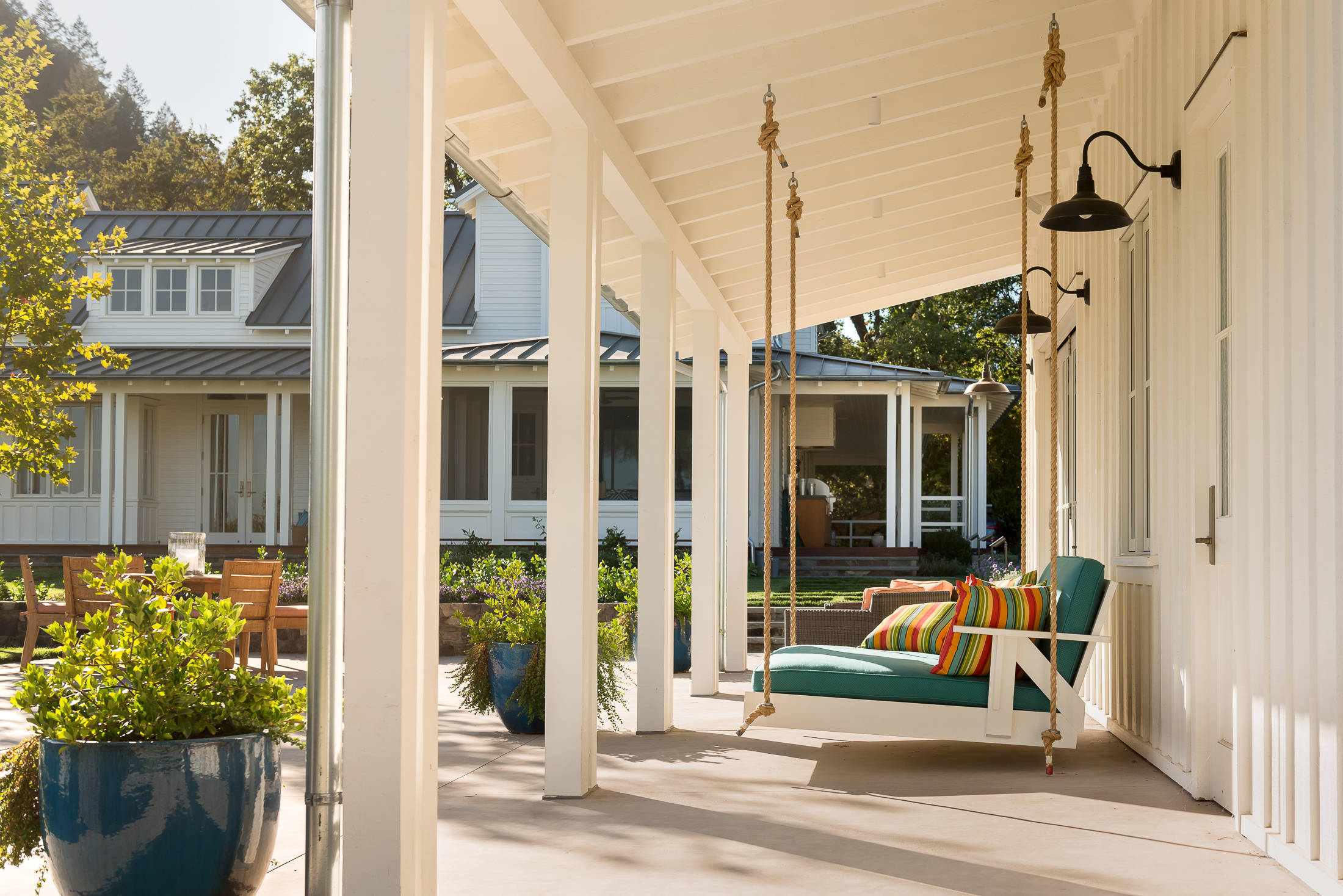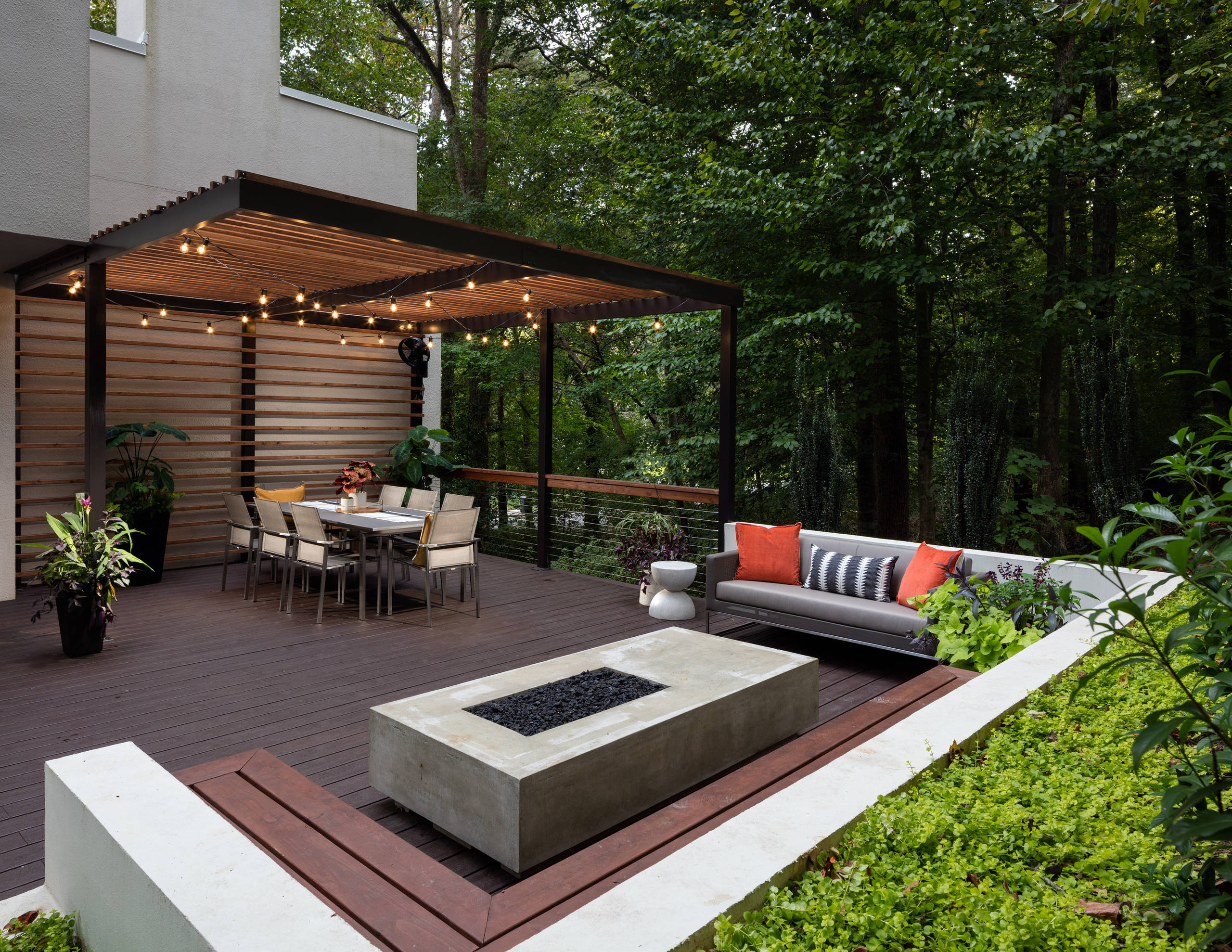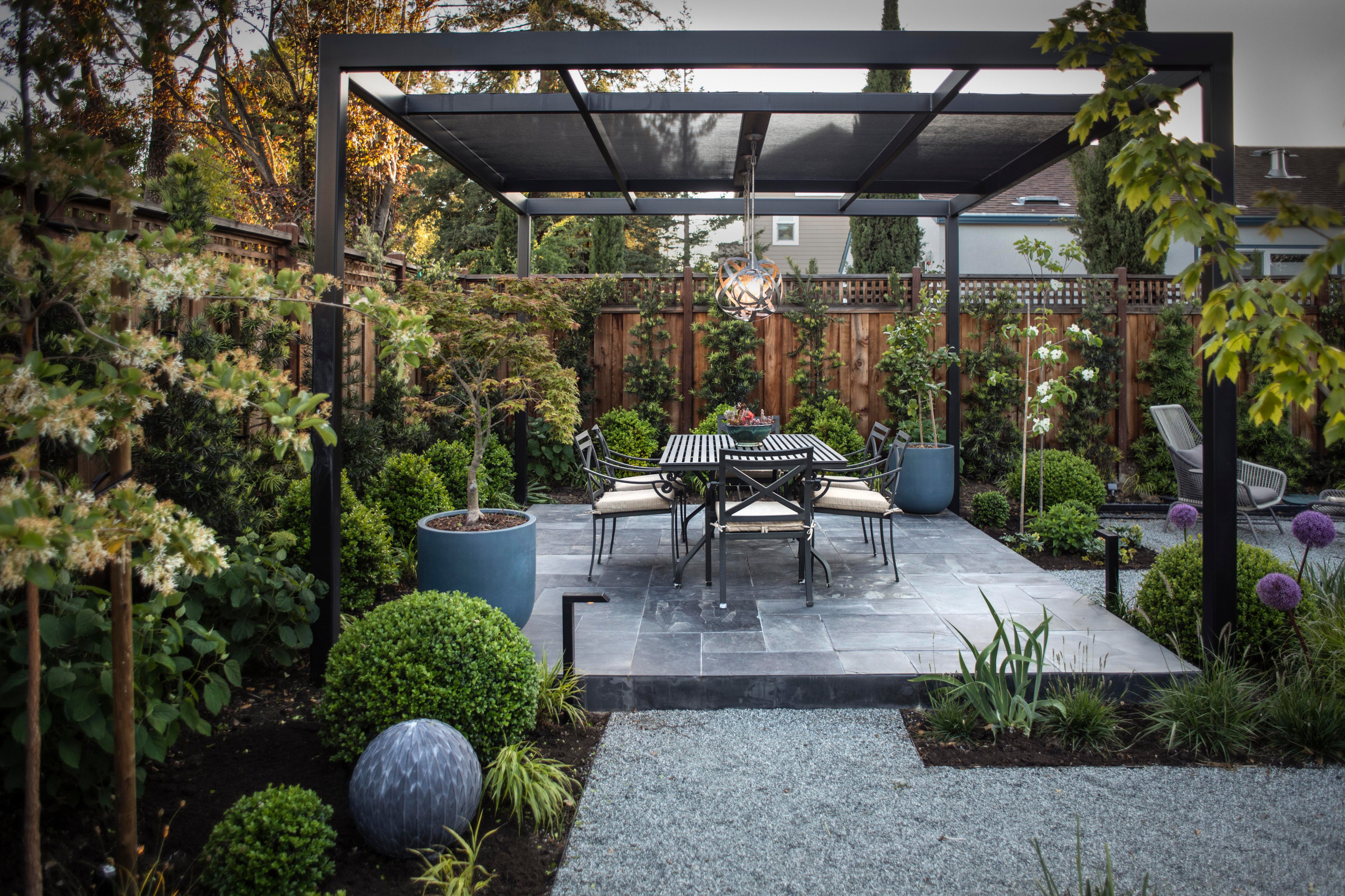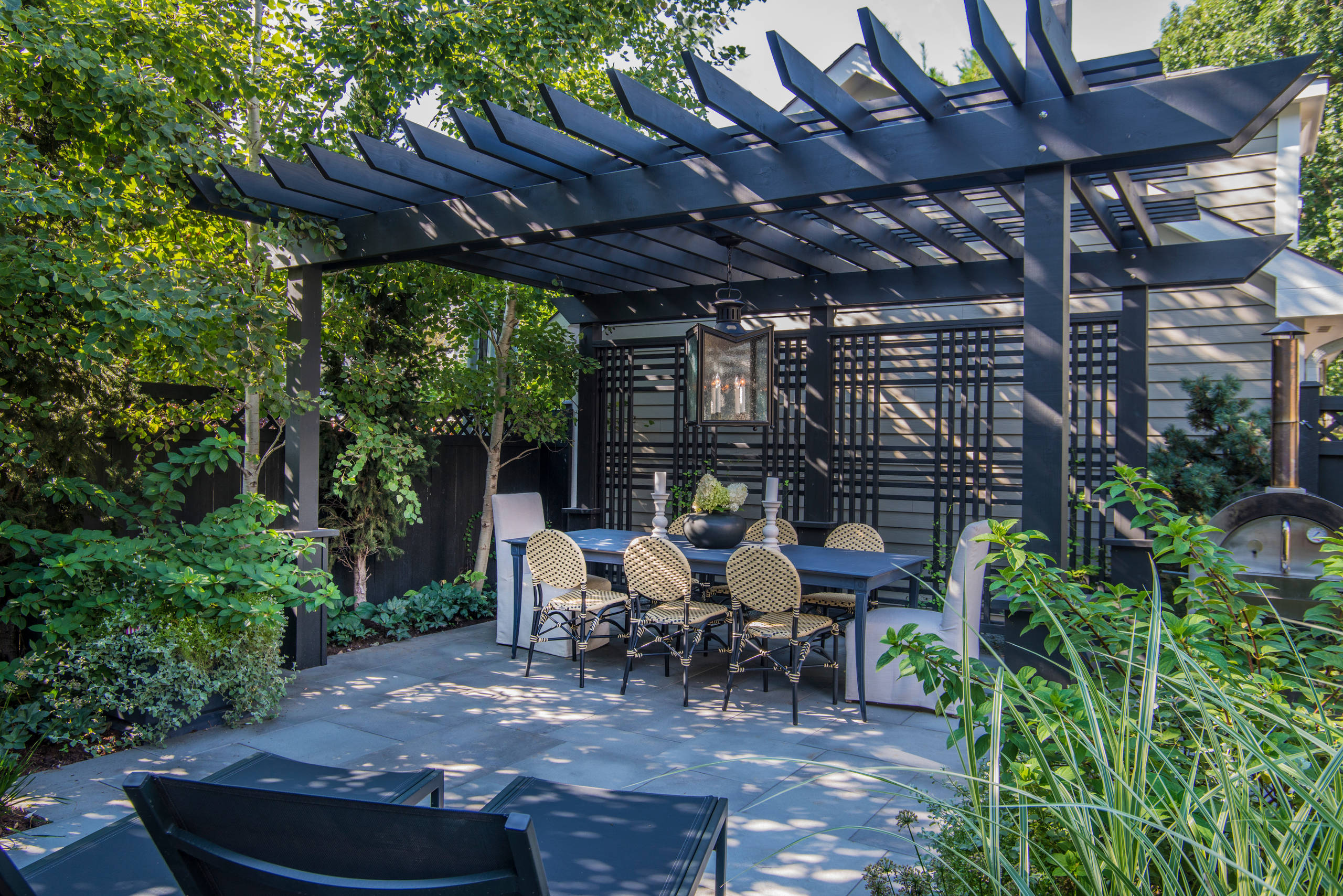Studies show a thoughtfully arranged outdoor area boosts property values by up to 12% – more than many kitchen renovations. This hidden potential sits right outside your door, waiting to be unlocked through intentional planning and creative vision. A stylish patio design can transform your outdoor space into an inviting retreat that not only enhances your lifestyle but also adds significant value to your home.
Picture mornings with coffee surrounded by lush greenery, evenings hosting friends around a crackling fire feature, and weekends reading in shaded comfort. Your backyard isn’t just grass and concrete – it’s blank canvas for living, not just looking.
The secret lies in balancing beauty with purpose. Durable materials like weather-resistant wicker meet plush cushions for all-day comfort. Strategic lighting extends usability into twilight hours, while zoning creates distinct areas for dining, lounging, and play.
Our team at WellCraft Kitchens transforms underused yards into seamless extensions of your home. With 23 years’ experience in Northern Virginia, we blend local climate knowledge with timeless aesthetics. Ready to explore your possibilities? Visit our Sterling studio at 23465 Rock Haven Way or call +1 (703) 991-7484 for personalized consultations Monday-Saturday.
Contents
- 1 Introduction to Stylish Patio Design
- 2 Benefits of an Inviting Outdoor Retre
- 3 Essential Elements of Patio Design
- 4 Choosing Quality Materials for Your Outdoor Space
- 5 Creative Patio Design Ideas for Small and Large Backyards
- 6 Incorporating a Fire Pit for Warmth and Ambiance
- 7 Designing Outdoor Dining and Kitchen Areas
- 8 FAQ
- 8.1 How can I mix functional zones in my backyard?
- 8.2 What’s better for durability: pavers or natural stone?
- 8.3 Are fire pits safe for small backyards?
- 8.4 What essentials do I need for an outdoor kitchen?
- 8.5 How do I maximize a small backyard?
- 8.6 What lighting works best for evening ambiance?
- 8.7 How can I add shade without a permanent structure?
Key Takeaways
- Outdoor upgrades offer higher ROI than many indoor renovations
- Multi-functional layouts maximize entertainment and relaxation areas
- Weather-resistant materials ensure year-round enjoyment
- Strategic lighting extends evening usability
- Professional planning avoids costly design mistakes
Introduction to Stylish Patio Design

Outdoor spaces that mirror indoor comforts offer a refreshing escape without leaving home. Imagine a cozy corner for book lovers beside a bubbling water feature, or a dining area ready for weekend barbecues. These transformative possibilities turn basic yards into purposeful retreats.
Setting the Stage for Outdoor Living
Start by mapping how you’ll use your area. Morning yoga sessions? Family game nights? Each activity needs dedicated zones. A smart layout ensures smooth movement between spots for meals, chats, and quiet time.
Materials matter as much as layout. Weatherproof fabrics and easy-clean surfaces keep your investment looking fresh. Add pops of color with throw pillows or potted plants for personality that lasts through seasons.
| Activity Zone | Key Features | Recommended Elements |
|---|---|---|
| Dining & Cooking | Shade coverage, durable seating | Built-in grill, modular tables |
| Relaxation | Soft lighting, privacy screens | Daybeds, outdoor rugs |
| Entertainment | Open flow, weatherproof tech | Weather-resistant speakers, fire table |
Balance beauty with brains. A stone path adds texture while guiding guests between areas. Vertical gardens save floor space but deliver lush greenery. Your choices should reflect both your taste and local climate needs.
Need inspiration? Browse local gardens or neighborhood setups. Small touches like pathway lighting or foldable furniture maximize flexibility. Remember: your backyard should grow with your lifestyle, not fight against it.
Benefits of an Inviting Outdoor Retre

Your backyard holds untapped potential to become a sanctuary that boosts well-being and connects loved ones. When designed intentionally, this area extends your living room into nature, creating seamless transitions between indoor comfort and fresh air.
Spending time in thoughtfully arranged environments reduces stress by 28% according to environmental psychologists. Soft seating near greenery or a water feature becomes your personal reset button. These spaces naturally draw people together, encouraging unplugged conversations under open skies.
A multi-purpose patio adds functional square footage without renovation headaches. Host summer dinners one week, then transform the space for yoga mornings or stargazing nights. This flexibility adapts to changing needs while maximizing your property’s usability.
Financial perks complement lifestyle upgrades. Professionally crafted layouts increase home values by 5-15% in competitive markets. They also cut energy costs by providing shaded areas that reduce indoor cooling demands during warmer months.
Consider these advantages:
- Year-round enjoyment with seasonal decor swaps
- Strengthened community ties through casual gatherings
- Improved physical health from increased outdoor activity
Your backyard becomes a gift that keeps giving. Neighbors might admire your fire pit setup, but the true reward comes from Friday night s’mores with kids or quiet sunrise moments with coffee. A well-planned patio isn’t just an upgrade—it’s a lifestyle shift toward richer daily experiences.
Essential Elements of Patio Design

“Great outdoor spaces feel like natural extensions of your home,” notes landscape architect Mia Torres. Start by mapping your ideal flow between relaxation spots and social hubs. This strategic approach transforms unused corners into purposeful retreats.
Defining Your Outdoor Space
Create clear activity zones using furniture arrangements that invite connection. A U-shaped seating group around a low table becomes an instant conversation hub. Add texture with weatherproof rugs and side tables for drinks – these subtle markers define boundaries without walls.
Mixing Functional Zones for Relaxation and Entertainment
Blend quiet nooks with lively dining spots through smart transitions. Try staggered planters between areas or contrasting floor materials. A sunken fire pit zone might sit steps away from an elevated eating space, connected by unified lighting.
Keep versatility front-and-center. Modular sectionals adapt for movie nights or large gatherings. Pro tip: Leave 36 inches between furniture pieces for easy movement. Your layout should whisper “stay awhile” while accommodating life’s spontaneous moments.
Choosing Quality Materials for Your Outdoor Space
Your outdoor surface choices impact both beauty and budget for years to come. Unlike interior decor that gets occasional updates, ground surfaces endure foot traffic, weather shifts, and seasonal changes. Selecting the right foundation ensures your space remains functional and attractive through countless gatherings and quiet moments alike.
Pavers, Natural Stone, Concrete, and Brick Comparisons
Pavers offer flexible installation with interlocking pieces that handle ground movement well. Available in geometric patterns or organic shapes, they create visual interest without permanent mortar. “Homeowners love how replacing single damaged units takes minutes,” notes Virginia contractor Mark Ellison. Initial costs run higher, but longevity often justifies the investment.
Natural stone brings unmatched character with unique veining and textures. Slate and granite withstand freeze-thaw cycles better than many options, making them ideal for colder regions. Regular sealing maintains their rich appearance, while irregular shapes create artisanal charm.
Concrete serves budget-conscious projects without sacrificing customization. Stamped versions mimic pricier materials, while integral color prevents fading. Properly installed expansion joints minimize cracking risks, though extreme temperature swings may still cause surface changes over time.
Brick delivers classic appeal with warm red tones that age gracefully. Its porous nature requires sealing in damp climates to prevent moss growth. Tightly spaced units with polymer sand keep weeds at bay, preserving that timeless look homeowners cherish.
When evaluating options, match material strengths to your local climate. Coastal areas benefit from salt-resistant choices, while frost-prone regions need crack-resistant surfaces. The best picks balance daily enjoyment with decade-spanning durability.
Creative Patio Design Ideas for Small and Large Backyards
Your outdoor area’s size doesn’t limit its potential – it just requires smarter solutions. Compact spaces shine when treated as multi-functional hubs. Think foldable tables tucked beside vertical herb gardens, or bench seating with hidden storage. These clever tweaks maximize every inch without clutter.
Elevating Your Layout
Multi-level layouts add depth to flat yards. A sunken conversation pit creates intimacy, while elevated dining platforms make meals feel special. “Tiered spaces naturally guide movement and create visual drama,” explains Maryland designer Elena Ruiz. Use retaining walls with built-in lighting to define each zone safely.
For cozy corners, try these tricks:
- Angle furniture toward garden features
- Use tall planters as natural room dividers
- Install retractable awnings for adjustable shade
Large properties benefit from winding stone paths connecting distinct areas. A fire pit circle near the tree line pairs perfectly with an open-air kitchen closer to the house. Keep materials consistent across zones – matching pavers or complementary wood tones create harmony.
Sloped lots become assets with terraced gardens and staggered seating. Native grasses in raised beds soften hard edges while requiring minimal upkeep. Remember: your layout should celebrate your land’s unique shape, not fight against it.
Incorporating a Fire Pit for Warmth and Ambiance
Gathering around flickering flames connects us to ancient traditions while creating modern memories. A well-placed fire pit becomes more than a heat source – it’s where stories get shared and marshmallows turn golden. These features extend outdoor enjoyment into cooler months, turning underused areas into social hubs.
Selecting the Right Fire Pit Style
Match your feature to your space’s personality. Sleek metal bowls suit contemporary settings, while stacked stone designs complement natural landscapes. Consider these factors:
| Style | Best For | Maintenance | Key Features |
|---|---|---|---|
| Modern Metal | Urban spaces | Wipe debris | Lightweight, movable |
| Rustic Stone | Large yards | Annual sealing | Permanent installation |
| Portable | Renters | Cover when unused | Gas/propane options |
“Always maintain 10 feet between flames and structures,” advises Virginia fire marshal Laura Chen. “Your enjoyment shouldn’t risk safety.”
Safety and Comfort Considerations
Position seating 3-4 feet from the fire pit for ideal warmth. Use heat-resistant materials like concrete or stone under units. Keep a bucket of sand nearby for quick flame control.
Weatherproof cushions transform basic benches into cozy spots. Rotate seating arrangements seasonally – closer for winter gatherings, farther during summer cookouts. Your setup should invite relaxation while respecting nature’s power.
Designing Outdoor Dining and Kitchen Areas
Outdoor meals become memorable events when your setup combines practicality with personality. A dedicated cooking and eating space turns simple barbecues into culinary experiences. The right layout keeps hosts engaged with guests while managing meal prep effortlessly.
Essential Features for Alfresco Cooking
Start with durable countertops that withstand sun and rain. Stainless steel appliances offer weather resistance, while closed storage keeps pests away from utensils. Include task lighting above grilling stations for evening safety and precision.
Smart flow matters most in outdoor kitchen designs. Position the grill near indoor access points for easy supply runs. Allow 42 inches between counters and seating for comfortable movement. Modular islands let you adapt configurations as needs change.
Don’t forget dining comfort. Cushioned chairs with quick-dry fabric make long meals enjoyable. Add overhead fans or retractable shades to combat summer heat. Your outdoor kitchen should feel like a natural gathering spot – where the sizzle of veggies meets laughter-filled conversations.
FAQ
What’s better for durability: pavers or natural stone?
Both options last, but pavers offer uniform shapes for easier installation, while natural stone provides a rustic look. Concrete is budget-friendly, and brick adds classic charm. Choose based on your style and local weather conditions.
Are fire pits safe for small backyards?
Yes! Opt for compact gas or propane models with safety screens. Keep them 10+ feet from structures, and use non-flammable materials like metal or stone around the base. Always check local regulations first.
What essentials do I need for an outdoor kitchen?
A> Start with a built-in grill, counter space, and storage cabinets. Add a mini-fridge or sink if space allows. Use stainless steel or powder-coated metal for longevity, and position the kitchen near your dining area for convenience.
How do I maximize a small backyard?
Try vertical gardens, foldable furniture, or built-in benches with hidden storage. Multi-level designs with raised planters or sunken seating can create visual interest without crowding the space.
What lighting works best for evening ambiance?
Combine string lights overhead for a cozy glow, solar path lights for safety, and LED lanterns on tables. For fire pits, choose heat-resistant options like wrought iron sconces or embedded paver lights.
How can I add shade without a permanent structure?
Use cantilever umbrellas for adjustable coverage, retractable awnings for flexibility, or shade sails in bold colors. Climbing plants like wisteria on trellises also provide natural, breezy protection.

